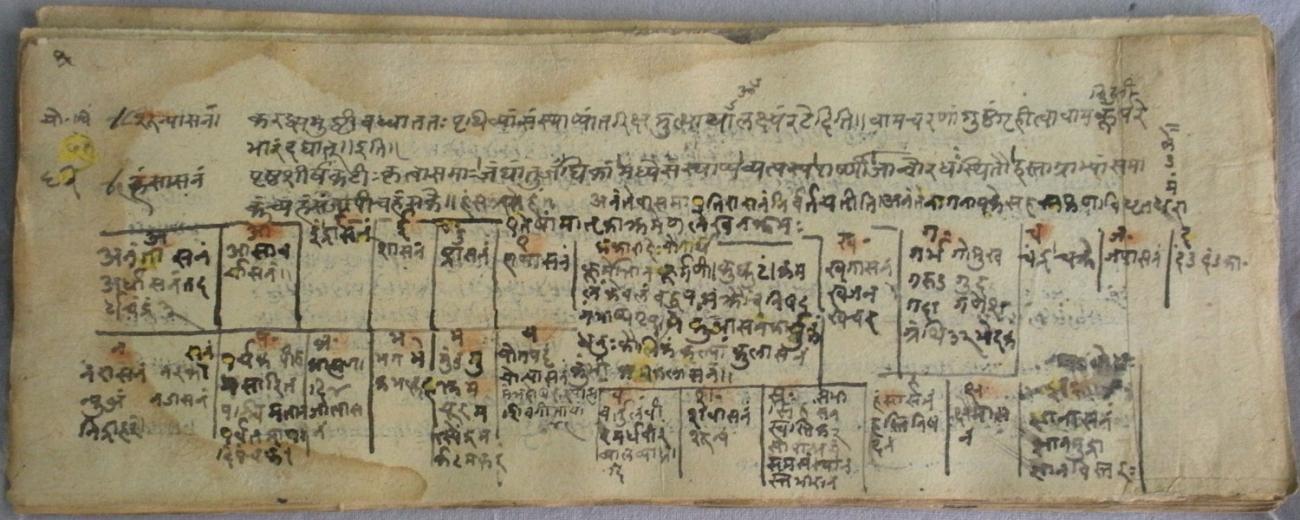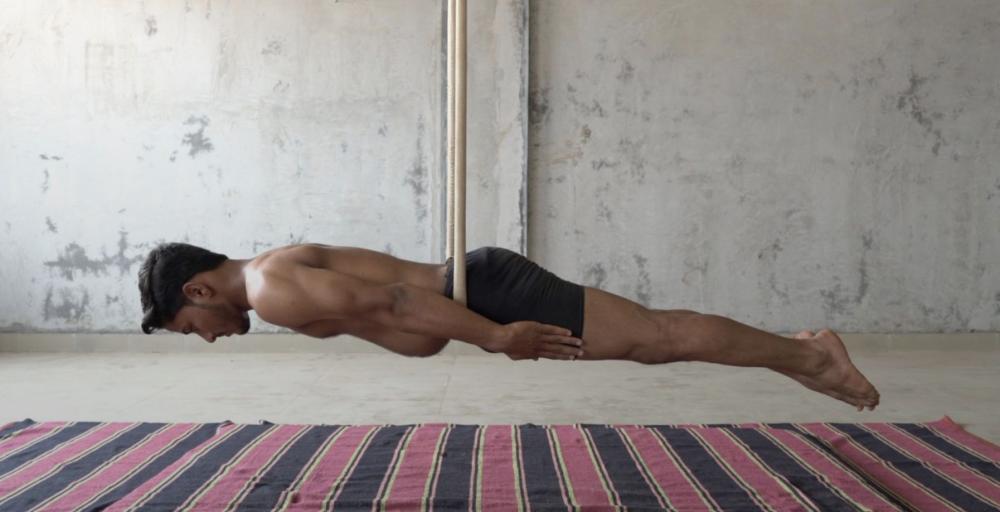Philology : Voices from the field


The Haṭha Yoga Project (2015–2020)
Below are two outputs from the philological research conducted as part of the Haṭha Yoga Project
Embodied philology
The Haṭhābhyāsapaddhati is one of the ten Sanskrit texts that is to be critically edited and translated as part of Haṭha Yoga Project (HYP). As a text it provides new evidence that Haṭhayogins practised dynamic āsanas before the nineteenth century, and played an important role in the development of these techniques. This reconstruction project aims to bring to life the unique content of the text through a visual demonstration of the āsana section, combined with Sanskrit recitation and English translation. A powerful reawakening of historical textual material and rich possibilities of philological research.
Website: haṭhābhyāsapaddhati.org
Manuscripts
The Yoga on Leaves short film is a collection of videos and photographs that document some of the philological fieldwork conducted in India between 2016 and 2019 as part of the Hatha Yoga Project. It gives a beautiful and meditative insight into the physical process and artifacts of philological research. It was shown as part of Embodied Liberation II, a virtual exhibition at the Brunei Gallery SOAS University of London 2020.
Video: Yoga on Leaves
Roots of Yoga
James Mallinson and Mark Singleton, Roots of Yoga (2017, Penguin Books)
An essential resource for any budding yoga scholar. The Roots of Yoga brings together some of the core teachings of the yoga tradition in one affordable (for once!) and easy-to-reference volume. It collects translated and edited passages from different eras, languages and traditions under useful thematic groupings; such as posture, breath control, mantra and yogic powers. The range of the source material - from early Upaniṣads to Buddhist, Tantric and Jaina traditions - brings to life the breadth, energy and innovation that has been a central feature of Yoga since its inception. A book you will find yourself returning to again and again as an essential sourcebook for yoga's historical foundations.
As a direct reflection of the impact of the work of the Haṭha Yoga Project and the changing landscape of Yoga Studies thanks to philological research, the text attributed in Roots of Yoga as the first to present a formalised system of yoga called haṭha (2017: xx) - the thirteenth century Dattātreyayogaśāstra - has now been revised. The earliest surviving work on Haṭhayoga is now believed to be the Amaraugha or Amaraughaprabodha, which likely dates from at least a century earlier. This is outlined in Jason Birch’s 2019 article ‘The Amaraughaprabodha New Evidence on the Manuscript Transmission of an Early Work on Haṭha and Rājayoga', available to access on Academia.edu.
Chapter summaries available on the Roots of Yoga website.
"Haṭhayoga’s methods draw from those of Pātañjala and tantric yoga, but also include physical practices found in neither. These are cleansing techniques, non-seated postures (āsanas), complex methods of breath-control and physical means of manipulating the vital energy (mudrās). Although these practices are taught for the first time in haṭhayoga texts, many of them, in particular the āsanas and mudrās, bear a close similarity to ascetic practices first mentioned in the latter half of the first millennium BCE, shortly after the time of the Buddha." (2017:xx)
Jason Birch
Haṭhayoga’s Floruit on the Eve of Colonialism
In Śaivism and the Tantric Traditions: Essays in Honour of Alexis G.J.S. Sanderson. Eds Goodall, D., Hatley, S., Isaacson, H., Raman, S. (2020, Leiden: Brill)
Available online at Academia.edu.
An invaluable and extensive examination of textual sources on Haṭhayoga following the publication of the Hatḥapradīpikā in the fifteenth century. Birch charts the changing practical and theoretical conceptions of Haṭhayoga, including several developments which foreshadowed and in some cases inspired the transnational yogas that were to become popular in the twentieth century.
"By the end of my doctorate, it was apparent to me that yoga texts composed on the eve of colonialism provided new insights into the history of yoga, and more specifically, are crucial for understanding how Haṭhayoga changed after it had been codified by Svātmārāma in the Hatḥapradīpikā (circa mid-fifteenth century). In fact, after Svātmārāma had successfully transformed Haṭhayoga from an auxiliary practice into a complete soteriological system, there began what might be considered the floruit of Haṭhayoga, insofar as its literature flourished, its systems of practice accumulated more techniques and it became, particularly in scholarly compendiums on yoga, almost synonymous with the auxiliaries of āsana and prāṇāyāma." (2013:401)
Past Centre of Yoga Studies talks
- Prof Pradeep Gokhale | Buddhist Roots of Pātañjala Yoga
- Karen O'Brien-Kop | Pātañjala yoga, yogācāra and dharmamegha (the cloud of dharma)
- Lubomir Ondračka | Is the Bengali Nāth literature really Nāth?
